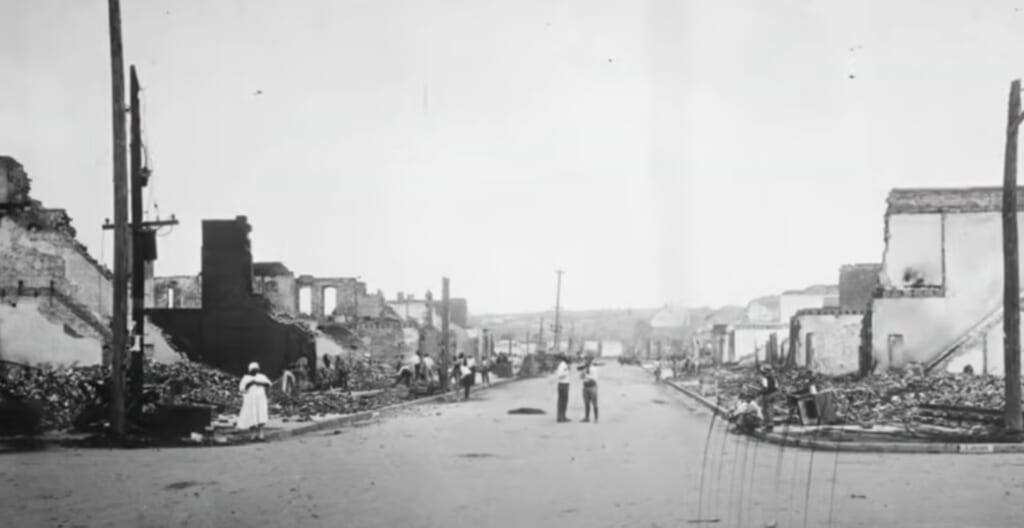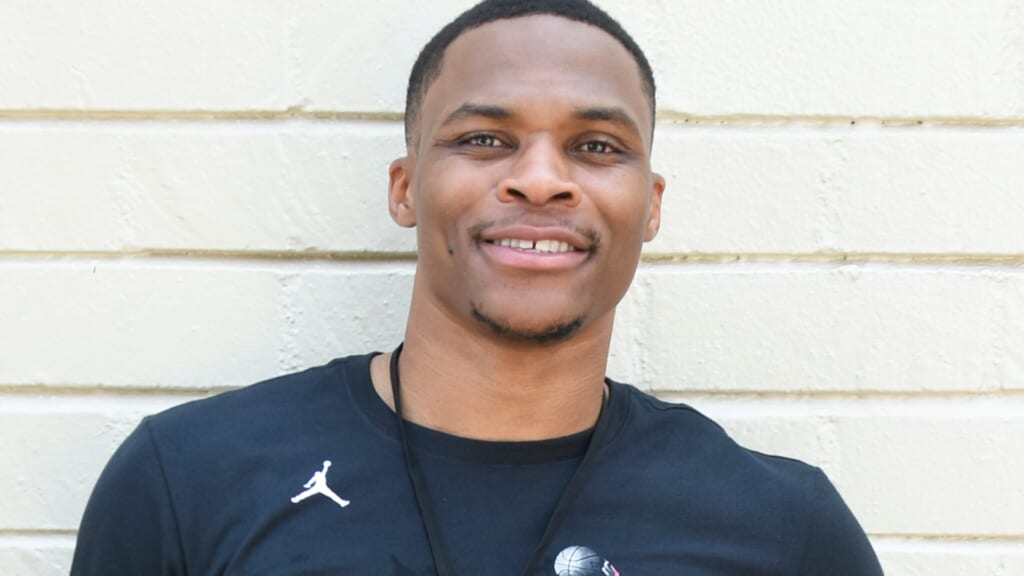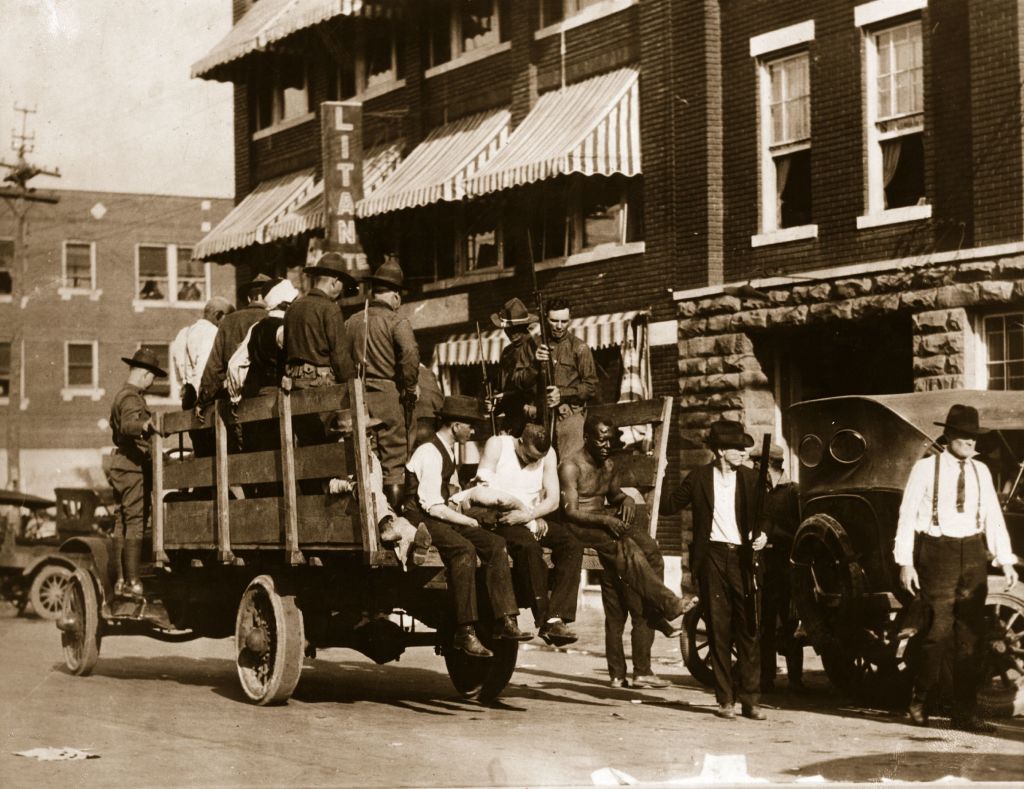Russell Westbrook ‘Tulsa Burning’ documentary takes in depth look at race massacre
The Tulsa documentary is described as “an in-depth, sobering look at the tragic events of a century ago and focuses on a specific period, from the birth of Black Wall Street, to its catastrophic downfall."
The two-hour documentary Tulsa Burning: The 1921 Race Massacre will commemorate the 100th anniversary of the tragedy—one of the greatest acts of violence in American history.
The Greenwood District of Tulsa, Oklahoma was once the home to the prosperous and bustling mecca known as Black Wall Street. It was the epicenter of entrepreneurship, ingenuity, and renaissance for the Black community. There were theaters, hotels, a funeral parlor, a library, doctors, lawyers, teachers, and a place of worship.

However, on May 31, 1921, a white mob instigated a massacre by firing into homes and bombs dropped from the air. The attack resulted in 100- 300 deaths, a stretch of blocks burned down, and the destruction of Black Wall Street. The perpetrators were never brought to justice.
Tulsa Burning: 1921 Race Massacre examines the long-lasting effects of that desecration through the eyes of historians, city leaders, and activists, including the Tulsa Historical Society & Museum, the John Hope Franklin Center for Reconciliation, the Tulsa Race Massacre Centennial Commission, and the Historic Vernon A.M.E. Church, among others. It is executive produced by NBA superstar Russell Westbrook with Emmy-Award winning director Stanley Nelson (Freedom Riders) and Peabody and duPont-Award winner Marco Williams (Two Towns of Jasper) at the helm.

“The Tulsa Race Massacre was not something I was taught about in school or in any of my history books,” Westbrook said in a statement in February. “It was only after spending 11 years in Oklahoma that I learned of this deeply troubling and heartbreaking event. This is one of many overlooked stories of African Americans in this country that deserves to be told. These are the stories we must honor and amplify so we can learn from the past and create a better future.”
The documentary is described as “an in-depth, sobering look at the tragic events of a century ago and focuses on a specific period, from the birth of Black Wall Street, to its catastrophic downfall over the course of two bloody days, and finally the fallout and reconstruction.”

Here are four takeaways from Tulsa Burning:
Greenwood Seen as Promised Land
Greenwood in Tulsa, Oklahoma was seen as the “promised land” for Black Americans post-Civil War and Reconstruction as they migrated over from the South. Many settled into the area which had 40 blocks and grew to a community of 10,000. O.W. Gurley is regarded as the father of Black Wall Street as the business leader who helped transform the district into a flourishing one. At the time of the massacre, the district was worth approximately $2 million according to historians.
Military Style Attack
On May 31, 1921, an organized “wall of white people” that is said to have been 2,000 attacked Black Wall Street with precision after a false rumor spread that a white girl had been sexually assaulted by a Black man. More than a dozen planes flew overhead as white men with torches attacked in addition to breaking windows and doors. Gunfights broke out as Black people tried to protect their property but they were outnumbered. About 100-300 people were killed and the entire district was burned down. There was no attempt made by the police or firefighters to stop the violence.
Insult was added to injury when Black people were blamed for the destruction of the Greenwood district. For those that did not survive and held in what is described as concentration camps, their bodies were placed in mass graves across the city. There is footage shown of current-day grave excavation efforts at Oaklawn Cemetery to find remains and unmarked coffins.
Read More: Angela Bassett, Courtney B. Vance to produce MTV series on Tulsa Race Massacre
Survivor Accounts
The media at the time of the Tulsa Race Massacre attempted to downplay what happened with assistance from the city that promised to make amends but failed to do so. No one was held accountable and Tulsa rebuffed help from the NAACP and sought to acquire the incinerated land. For 50 years, papers such as Tulsa World and Tulsa Tribune did not report on the harrowing experience.
However, survivors of the massacre can be seen and heard in archived footage after they went on the record in 1999. It marked a turning point as they recounted the horror they endured. As much as the Tulsa Race massacre is a tragedy, the strength of people such as Kenny Booker, Eunice Jackson, and J.B Bates to tell their story forced the truth into the light of day.
Justice
In 1997, a commission was formed to investigate by the state legislature to determine what happened during the deadly siege. Furthermore, the 1921 Tulsa Race Massacre Centennial Commission is committed to developing projects that commemorate the tragic anniversary. 99 years after the massacre, a formal investigation was launched. However, descendants of the tragedy and the community believe there needs to be proper restitution.
Tulsa Burning: The 1921 Race Massacre will air Sunday, May 30 at 8 PM ET/PT on The HISTORY® Channel. The network is also partnering with WNYC Studios to launch a new six-part podcast series Blindspot: Tulsa Burning on Friday as complimentary audio content.
Watch the trailer below.
Have you subscribed to theGrio’s podcast “Dear Culture”? Download our newest episodes now!
TheGrio is now on Apple TV, Amazon Fire, and Roku. Download theGrio today!
